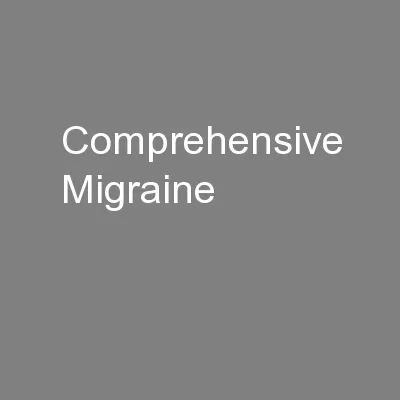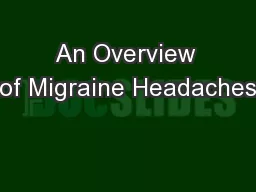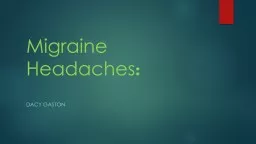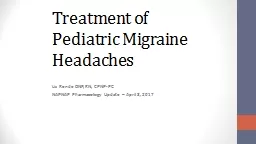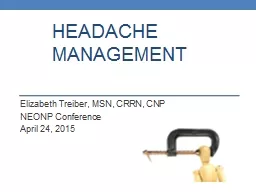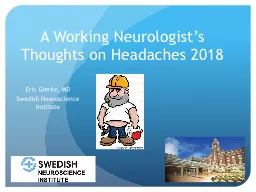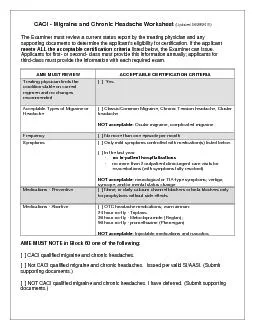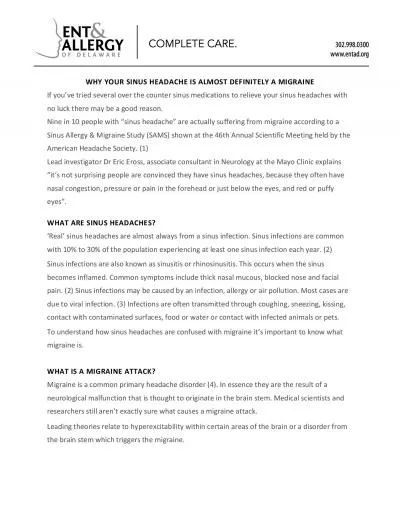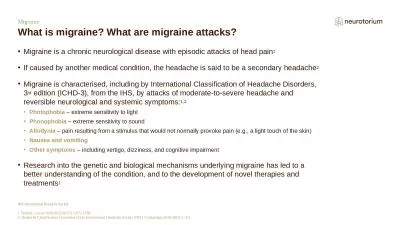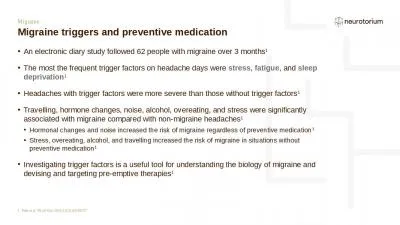PPT-Migraine Headaches: Did You Know?
Author : pasty-toler | Published Date : 2019-06-29
By Tammy Butler PharmD Disclosure Presenter is not affiliated with any manufacturers of the mentioned products or devices in this presentation Objectives Learning
Presentation Embed Code
Download Presentation
Download Presentation The PPT/PDF document "Migraine Headaches: Did You Know?" is the property of its rightful owner. Permission is granted to download and print the materials on this website for personal, non-commercial use only, and to display it on your personal computer provided you do not modify the materials and that you retain all copyright notices contained in the materials. By downloading content from our website, you accept the terms of this agreement.
Migraine Headaches: Did You Know?: Transcript
Download Rules Of Document
"Migraine Headaches: Did You Know?"The content belongs to its owner. You may download and print it for personal use, without modification, and keep all copyright notices. By downloading, you agree to these terms.
Related Documents


